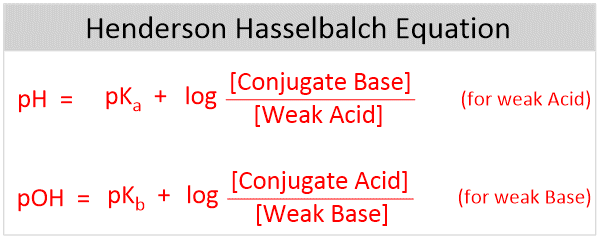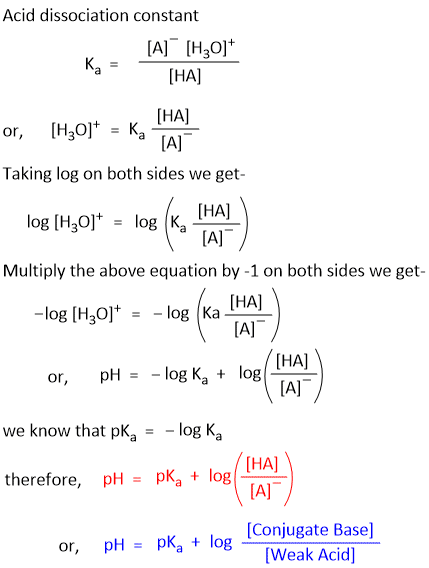Derive the Henderson-Hasselbalch Equation
Derivation of Henderson-Hasselbalch Equation

Henderson-Hasselbalch equation is used to determine the pH of a buffer system and can be derived from the Ka of a weak acid.
Let us assume a weak acid (HA) and its conjugate base (A–). In water the following dissociation occurs-
HA + H2 ⇌ A– + H3–
According to the law of dissociation, the acid dissociation constant (Ka) can be defined by the equation

Similarly, we can derive the equation for Base-

Limitations of Henderson-Hasselbalch Equation
Henderson equation fails to explain the accurate values of the strong acids and strong bases. In addition, it can explain the pH values for very dilute solutions.
Applications of Henderson-Hasselbalch Equation
Some important applications of the Henderson-Hasselbalch equation are give below-
1. It helps in the calculation of pH if the ratio of salt to acid is known.
2. To find the change in pH, when the strong base is added to the solution of a weak acid.
3. It is used in the determination of the pKa of a weak acid.
4. It is extensively applied in the pharmaceutical industry and drug synthesis.
